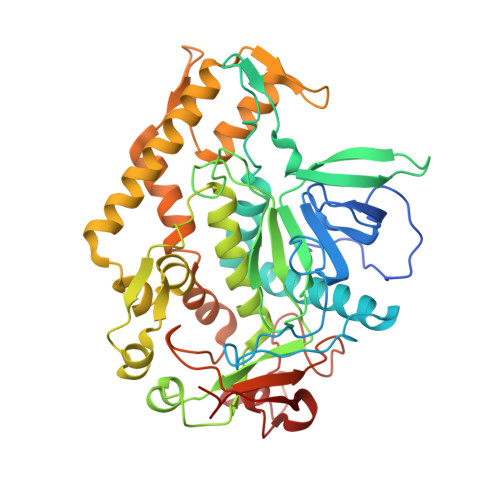Catch and Anchor Approach To Combat Both Toxicity and Longevity of Botulinum Toxin A.
Lin, L., Olson, M.E., Sugane, T., Turner, L.D., Tararina, M.A., Nielsen, A.L., Kurbanov, E.K., Pellett, S., Johnson, E.A., Cohen, S.M., Allen, K.N., Janda, K.D.(2020) J Med Chem 63: 11100-11120
- PubMed: 32886509
- DOI: https://doi.org/10.1021/acs.jmedchem.0c01006
- Primary Citation of Related Structures:
6XCB, 6XCC, 6XCD, 6XCE, 6XCF - PubMed Abstract:
Botulinum neurotoxins have remarkable persistence (∼weeks to months in cells), outlasting the small-molecule inhibitors designed to target them. To address this disconnect, inhibitors bearing two pharmacophores-a zinc binding group and a Cys-reactive warhead-were designed to leverage both affinity and reactivity. A series of first-generation bifunctional inhibitors was achieved through structure-based inhibitor design. Through X-ray crystallography, engagement of both the catalytic Zn 2+ and Cys165 was confirmed. A second-generation series improved on affinity by incorporating known reversible inhibitor pharmacophores; the mechanism was confirmed by exhaustive dialysis, mass spectrometry, and in vitro evaluation against the C165S mutant. Finally, a third-generation inhibitor was shown to have good cellular activity and low toxicity. In addition to our findings, an alternative method of modeling time-dependent inhibition that simplifies assay setup and allows comparison of inhibition models is discussed.
- Program in Biomolecular Pharmacology, Boston University School of Medicine, Boston, Massachusetts 02118, United States.
Organizational Affiliation:

















